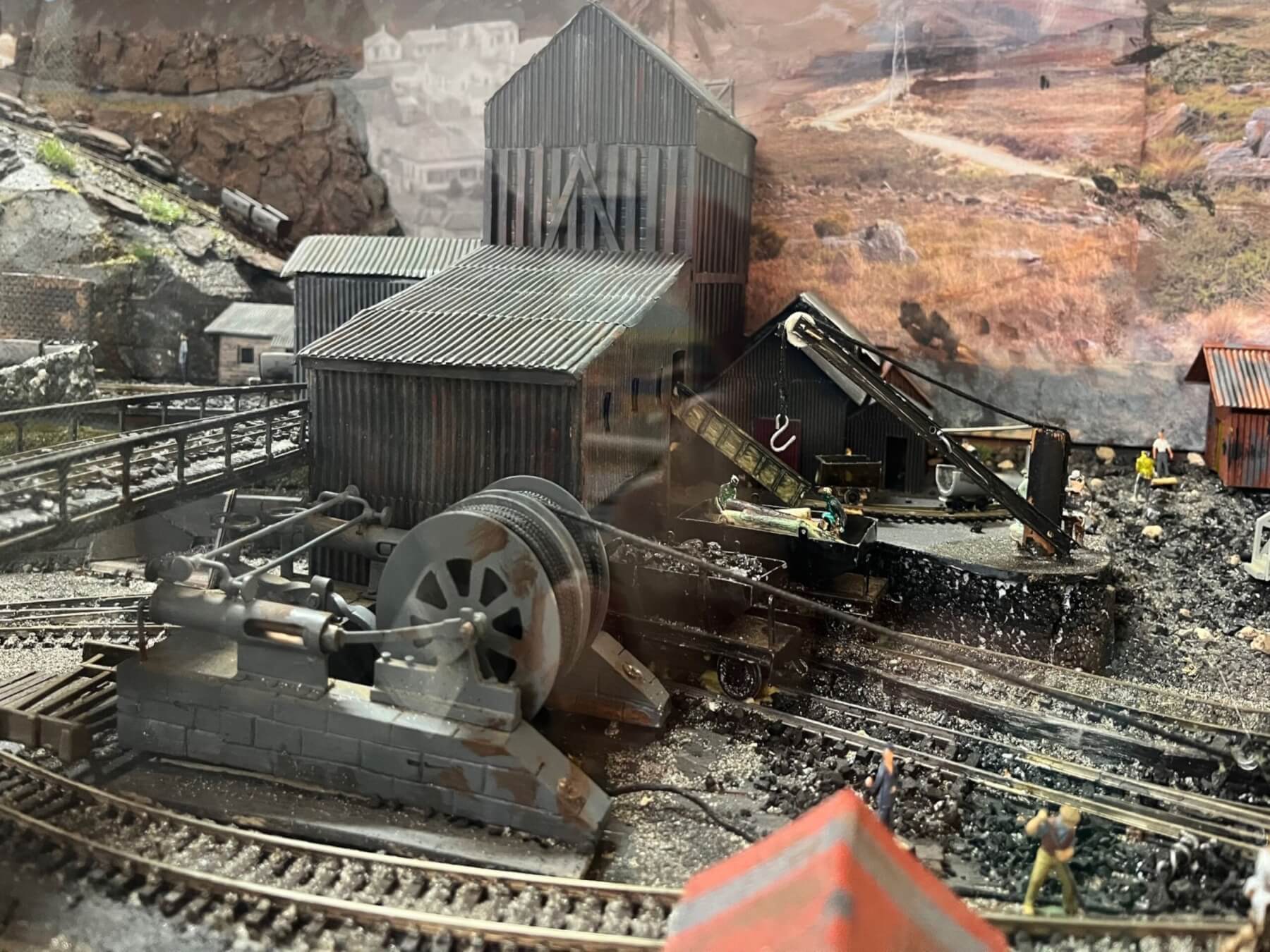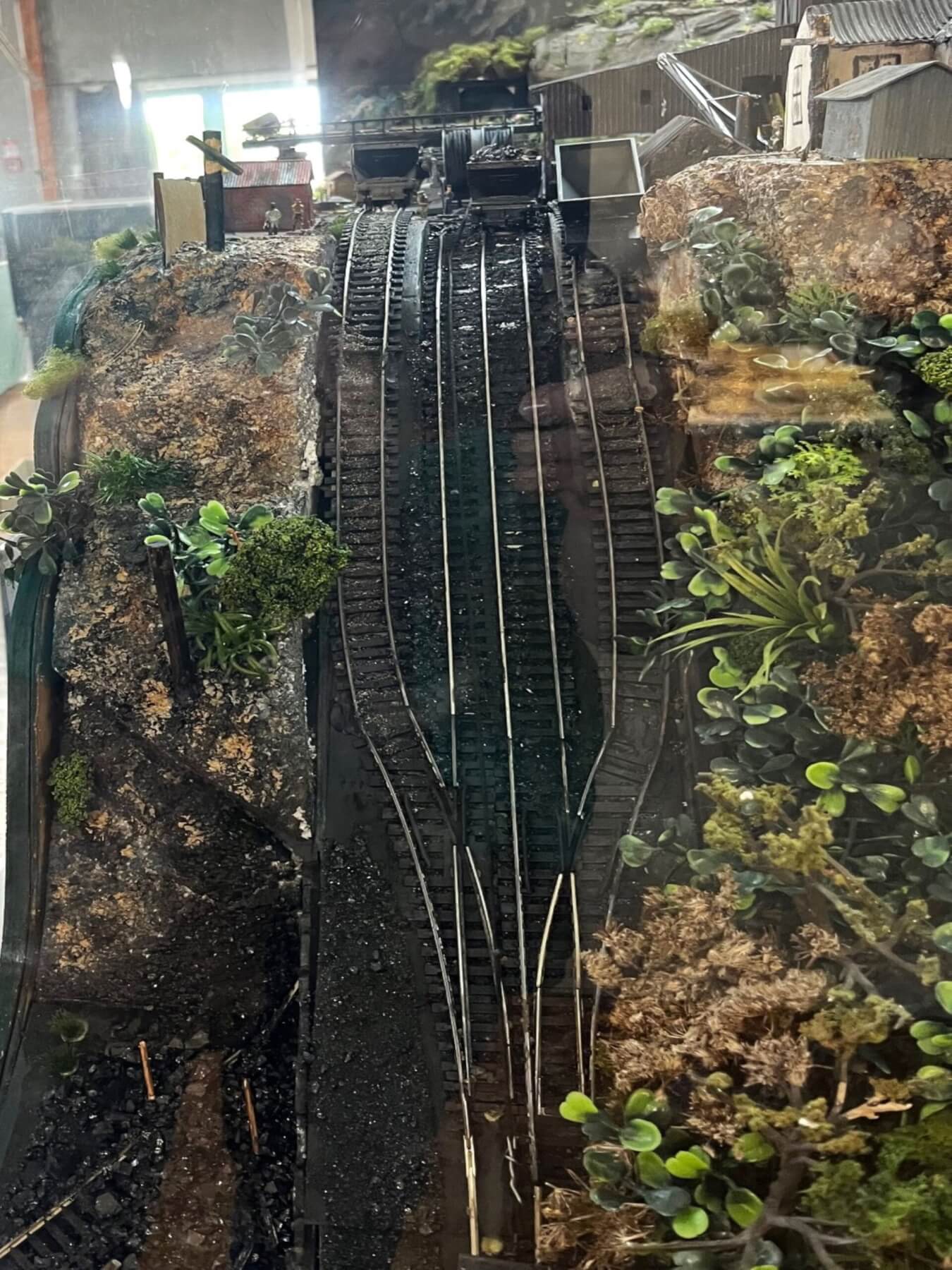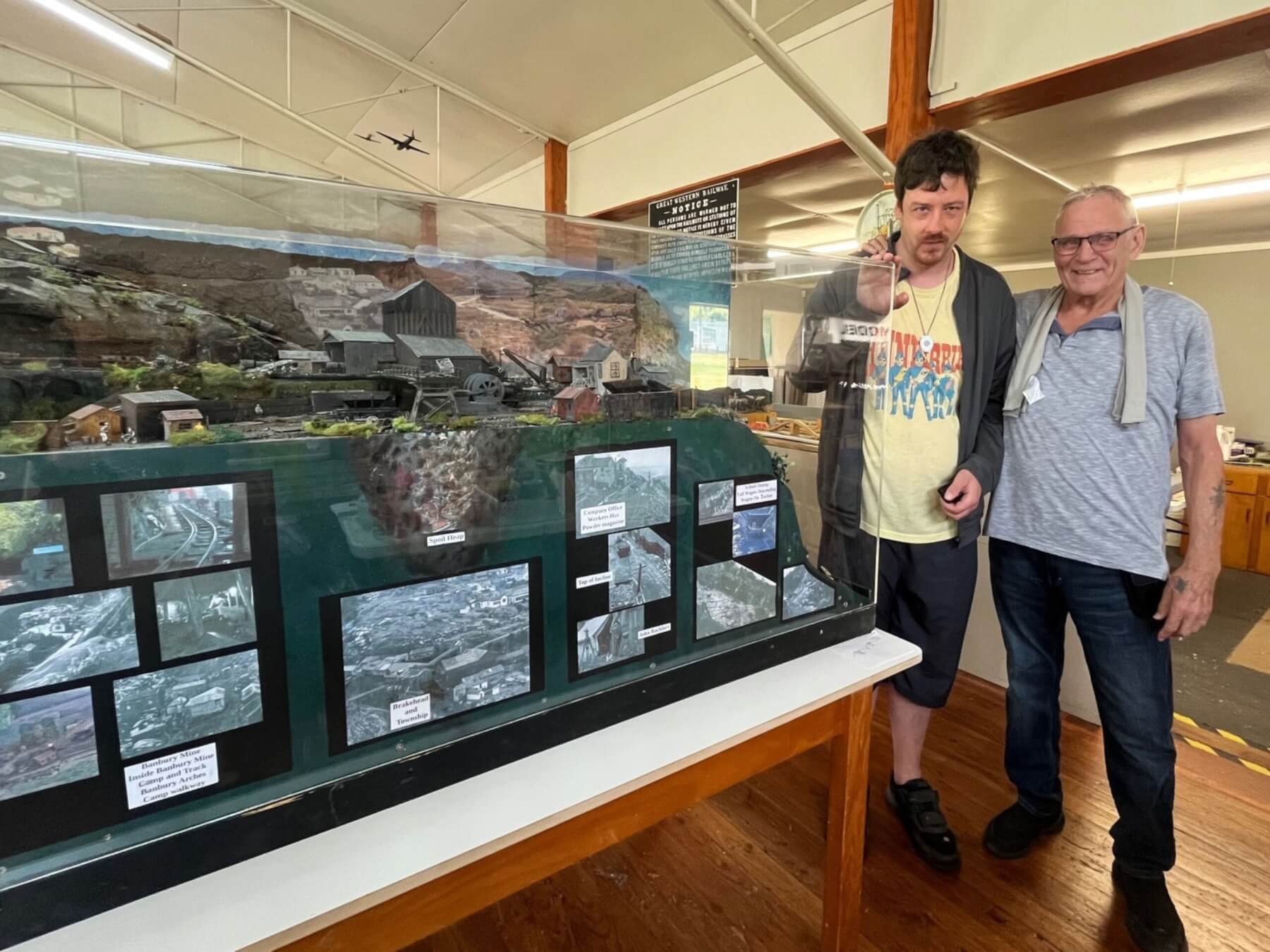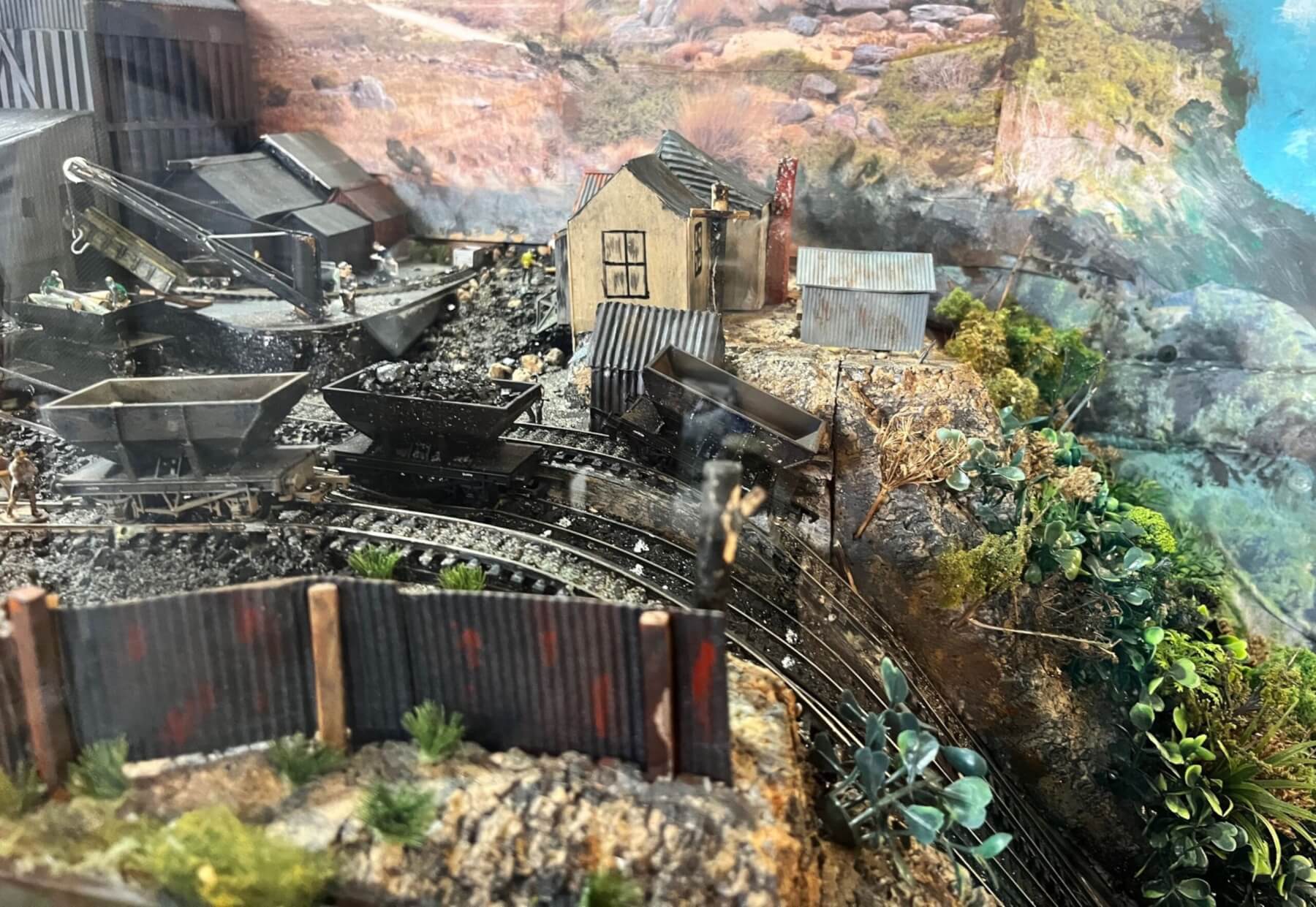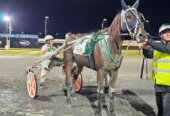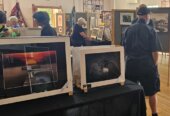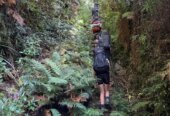A model of the brakehead at the top of the Denniston Incline is moving today to Westport, where it will be donated to the ‘Friends of the Hill’ Museum.
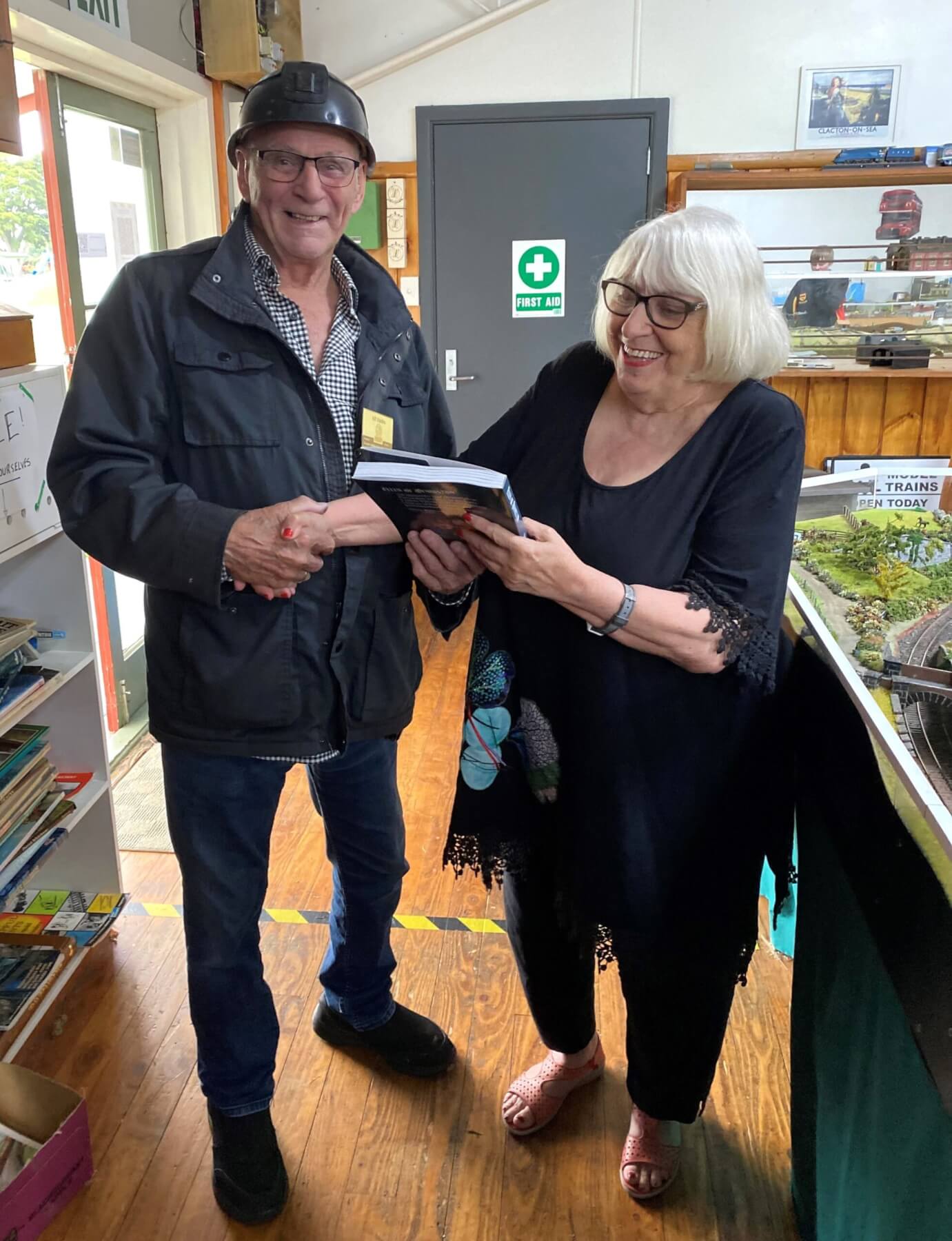
United through a shared mining history, railway modeller Alf Stubbs and Ōhaupō author Val Millington at the modellers’ clubrooms in Leamington. Photo: supplied
The Greater Waikato Railway Modellers (GWRM) model’s completion has been a passion project for the Cambridge modellers.
It was started a few years ago by the late modeller Colin Robinson. He and his wife Paddy were both members of Friends of the Hill, a community group created by former Denniston residents. Colin’s original intention was to donate the completed model to the museum at Denniston, which is housed in the settlement’s former high school, but he died before he could finish the work.
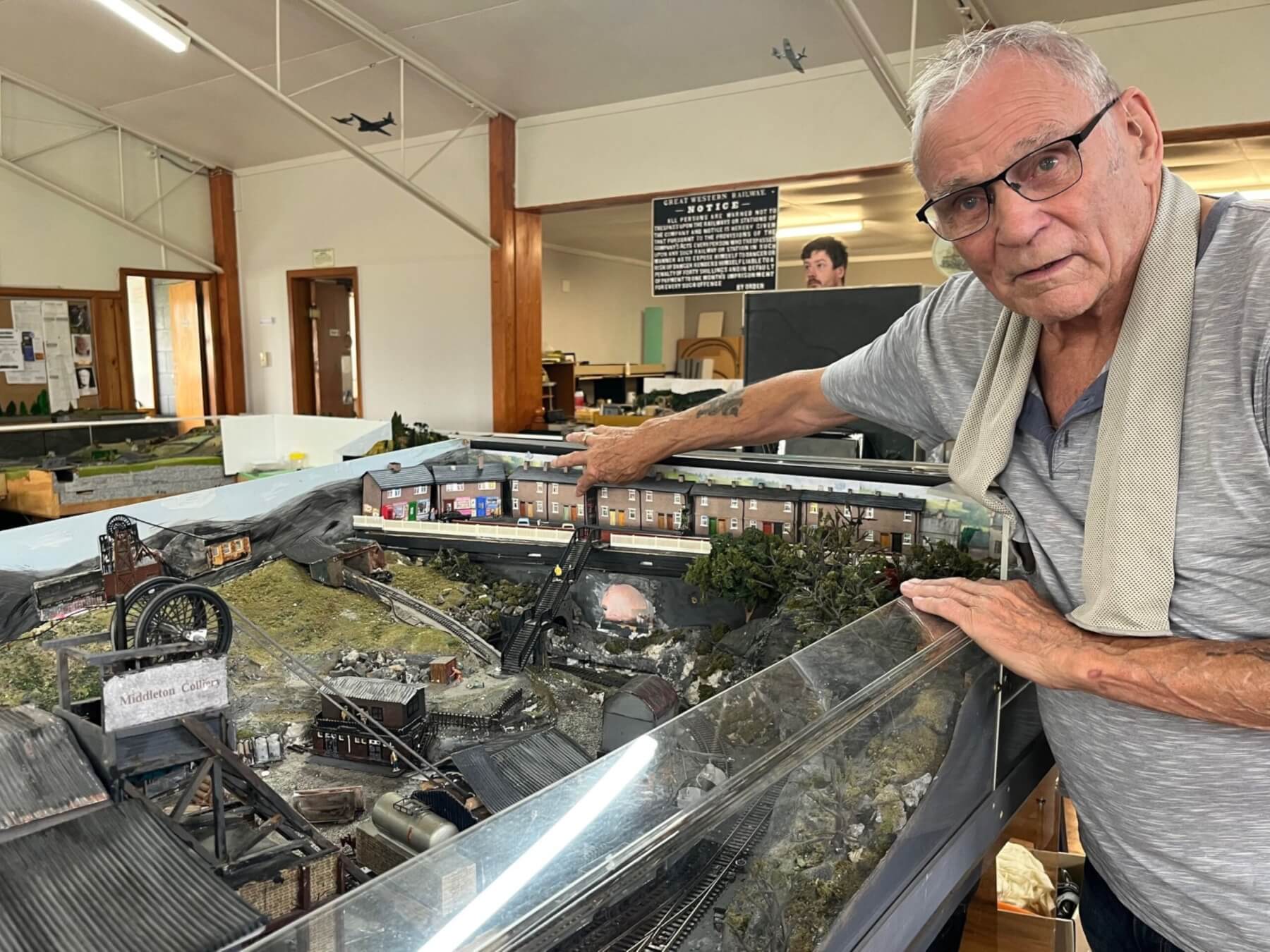
Former UK mining engineer Alf Stubbs pointing the house he lived in at Middleton Colliery in Yorkshire. He built the model a few years ago. Photo: Viv Posselt
The project was then adopted by the Cambridge crew with the blessing of Colin’s widow.
Leading its modification was retired British mining engineer Alf Stubbs, who had visited Denniston several times. He enlisted the aid of fellow GWRM members.
The famous incline, known to some as the eighth wonder of the world, is considered a triumph of engineering. It opened in 1879 to move coal in railway wagons from the steep Mt Rochfort Plateau to Denniston, covering a drop of 518m over 1670m distance. The gradient in some places is 1:1.25 (80 per cent).
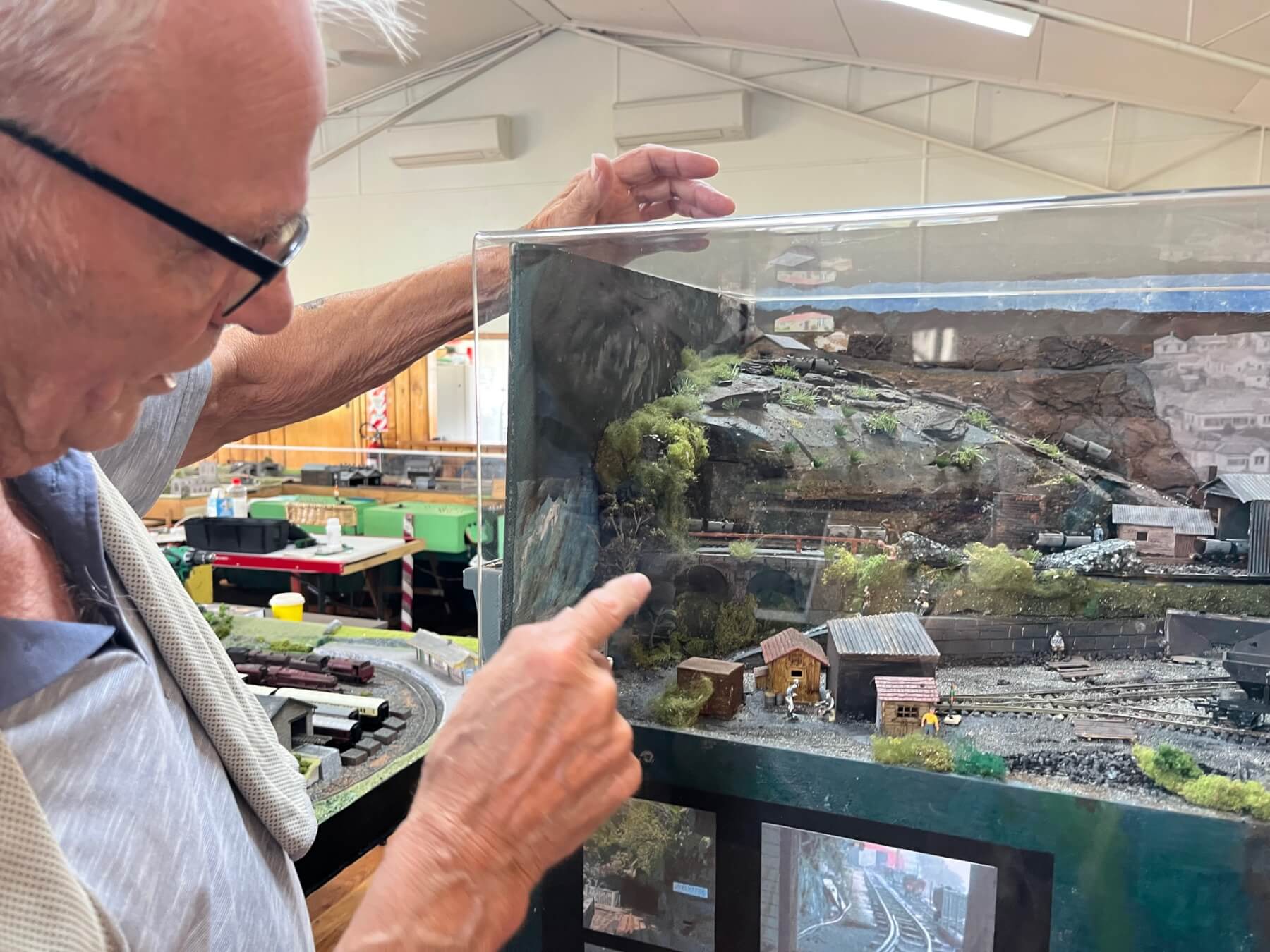
Former mining engineer now railway modeller Alf Stubbs, pointing out some of the detail in the model of the Denniston Incline. Photo: Viv Posselt
Key to its operation was the brakehead at the top the incline, and it is that section that has been replicated by railway modellers. Its story has numerous join-the-dot coincidences.
The Mt Rochfort Plateau – also known as the Denniston Plateau – was named after English-born John Rochfort, a surveyor-engineer who helped map and open up early New Zealand. His discovery of coal at Denniston led to the naming of the plateau. Rochfort later moved to the North Island where he continued surveying in the Waikato until his death at 60. He is buried in Kihikihi.
Another link ties the model to Ōhaupō’s Val Millington. The News covered last November’s launch of her book ‘Ellen of Denniston’, telling the story of her mother’s life at Denniston.
Alf has been reading the book, and on a recent visit to the modellers’ clubrooms in Leamington, Val stumbled upon another of Alf’s passions – a model of Middleton Colliery, outside Leeds in Yorkshire. It was where Alf lived and started work on the mines straight after school.
Val’s great-grandparents had come to Denniston from Middleton Colliery, where Ellen’s grandfather Allan Moseley was a miner. When they arrived at Denniston and saw the steep walk to get to the plateau, they put the youngest of their nine children and a few possessions into a coal wagon to scale the incline.
Mining at Denniston has long since ceased and the settlement, once home to over 1500 people, now houses just a handful of stalwarts.
Taking the model down to Denniston today will be modellers Alf Stubbs, John Curtis and Rex Beech. Accompanying them will be Hamilton father and son, Graham and Sam McClung. Sam was introduced to the Cambridge modellers when visiting with Alf’s son and has followed the model’s development with interest because his grandparents were residents on the plateau and worked the Denniston mine.
Val Millington will also be there – as guest speaker in the very classroom in which her own mother’s tragedy at age 17 unfolded. Three years in hospital and 30 operations later, Ellen’s life changed dramatically. She moved from ‘The Hill’ and went on to achieve recognition for developing the National Fieldays at Mystery Creek.



